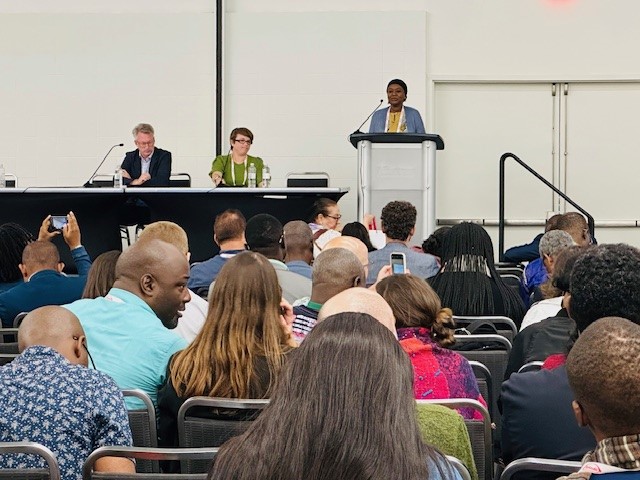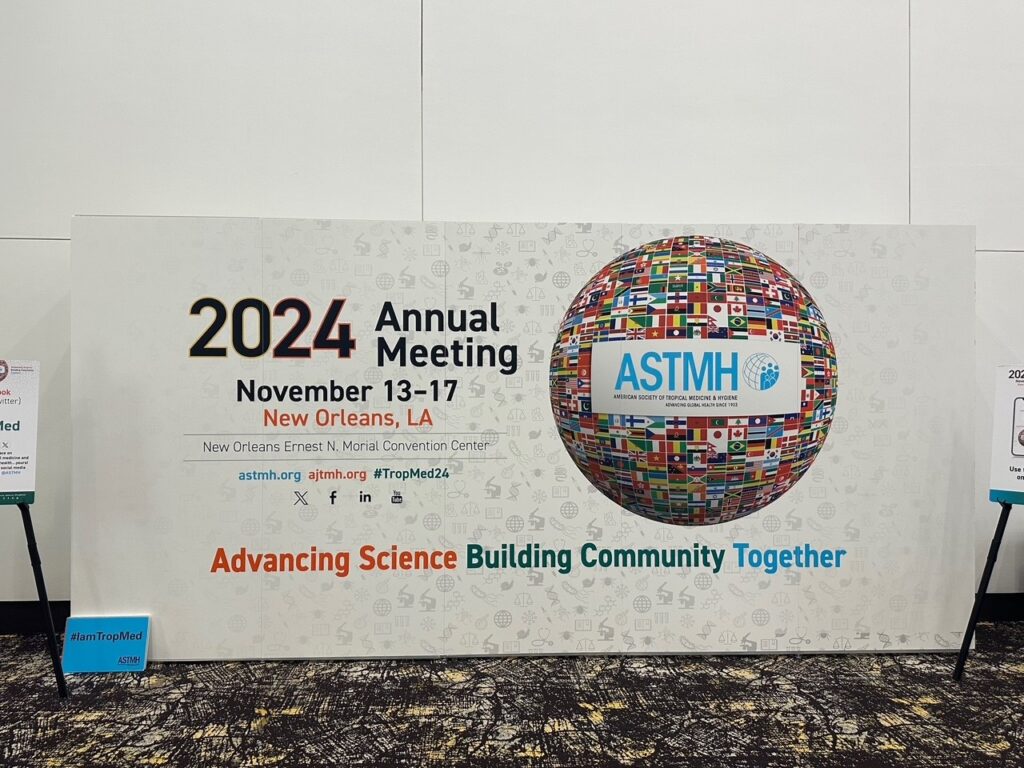
In New Orleans – a city where early epidemics of yellow fever, cholera, and malaria produced the first school of public health and first school of tropical medicine in the United States – the city once more turned its focus to infectious diseases and reducing the global burden, becoming this year’s site of the 2024 American Society of Tropical Medicine and Hygiene (ASTMH) annual meeting.
Front and center at the 2024 ASTMH annual meeting, held from November 13-17, was the topic of malaria as Dr. David Walton, the U.S. President’s Malaria Initiative’s Global Malaria Coordinator, reminded attendees during an early panel discussion, “We face a series of new headwinds in the fight against malaria …climate shocks, insecticide resistance, drug resistance…So, while we are really excited to celebrate the President’s Malaria Initiative’s 20th anniversary, the work continues.”
Throughout the five-day conference - regarded as the premier international forum for the exchange of scientific and clinical advances in tropical medicine, hygiene and global health - scientific experts and thought leaders from around the world discussed the latest challenges and opportunities facing the malaria fight, sharing their world-class research findings and clinical updates.

The Challenge: Resistance to Malaria Treatment
Among the studies presented at this year’s meeting was troubling new research uncovering evidence of partial resistance to artemisinin derivatives - the primary treatment for malaria - in young children with severe, or "complicated," malaria.
The research, presented by the Indiana University School of Medicine researchers, in collaboration with colleagues at Makerere University in Uganda, marks the first time signs of resistance in African children with severe malaria to standard malaria treatment have been documented.
"Artemisinin-based therapies have been quintessential in the fight against malaria for the past 20 years," said Dr. Chandy C. John, the Ryan White Professor of Pediatrics at the IU School of Medicine and corresponding author of the study. "Growing evidence of artemisinin partial resistance in African children with uncomplicated malaria has led to concerns that new therapies, like triple artemisinin combination therapies, may be needed in uncomplicated malaria. The findings of artemisinin partial resistance in children with severe or complicated malaria, as well as the findings of a high rate of recurrent malaria with current standard treatment in these areas raise the question of whether new treatments are needed for severe malaria as well."
Possible Solutions & Potential Game-changers in Malaria Diagnosis
Presented as a possible game-changer in the malaria fight, was a clinical performance study on a new AI-driven malaria diagnostic solution, miLab MAL. Researchers shared with ASTMH attendees how the new malaria diagnostic tool had greater accuracy compared to standard microscopy tests.
“MiLab MAL delivers highly accurate diagnostic results with 15 minutes, surpassing the accuracy of expert microscopists,” said Professor Wellington A. Oyibo, Chair of the Malaria Operational Research Expert Group of Nigeria’s National Malaria Program and a professor at the University of Lagos, during his oral presentation.
The presentation suggested that effective deployment of miLab MAL could provide critical data to health policymakers for accurately assessing malaria infection rates and severity to more effective resource allocation and response strategies.
Also in attendance at this year’s ASTMH meeting was epidemiologist from the Yale School of Public Health, Dr. Sunil Parikh, MD, MPH, who alongside colleagues from the University of Arkansas for Medical Sciences and Cameroon, recently published new research in Nature Communications, on a new, noninvasive test that could dramatically alter the global malaria testing landscape by providing reliable, safe, and sensitive testing to low- and middle-income countries that have been plagued by the deadly mosquito-borne disease.
“You could also imagine this device being used in a setting where you want to screen large numbers of individuals quickly - where malaria is actually not very prevalent - and you want to pick it up as a screening tool to avoid having large numbers of people get a blood finger prick,” Parikh said.
For more from ASTMH experts on the latest malaria challenges & solutions, follow Malaria No More’s “Malaria Know More” series on X.
And for interviews with malaria experts and/or the headlines that emerged from this year’s ASTMH annual meeting, contact: Mindy Mizell, Sr. Media Relations & Communications Manager, Malaria No More at mindy.mizell@malarianomore.org.



